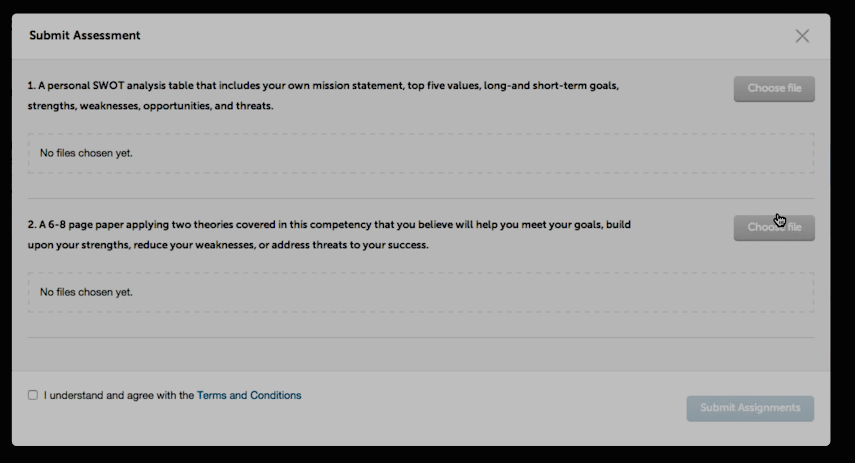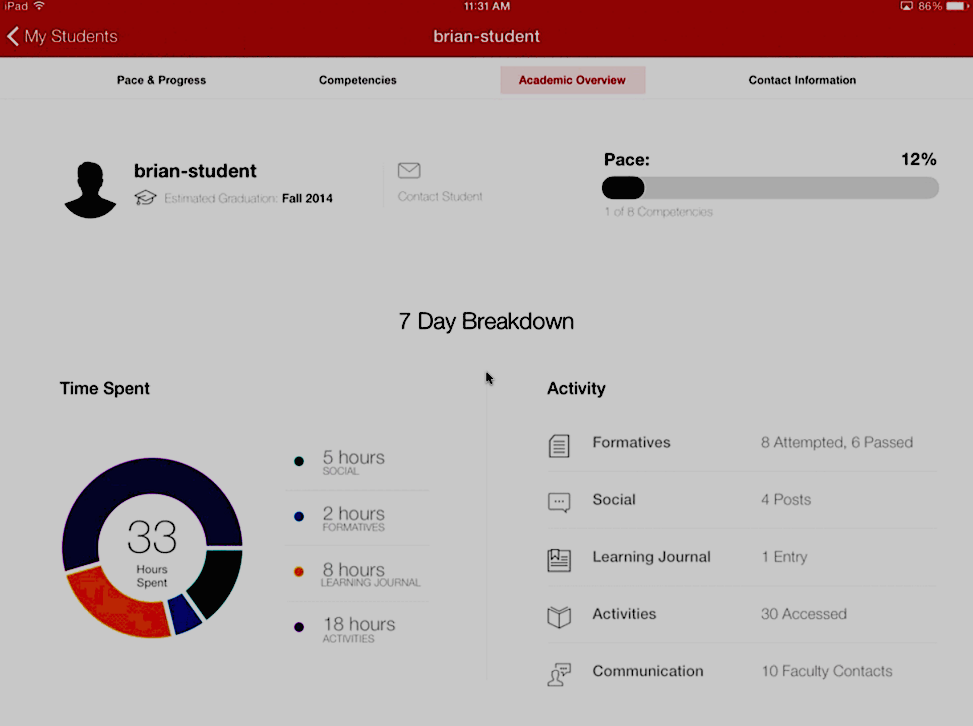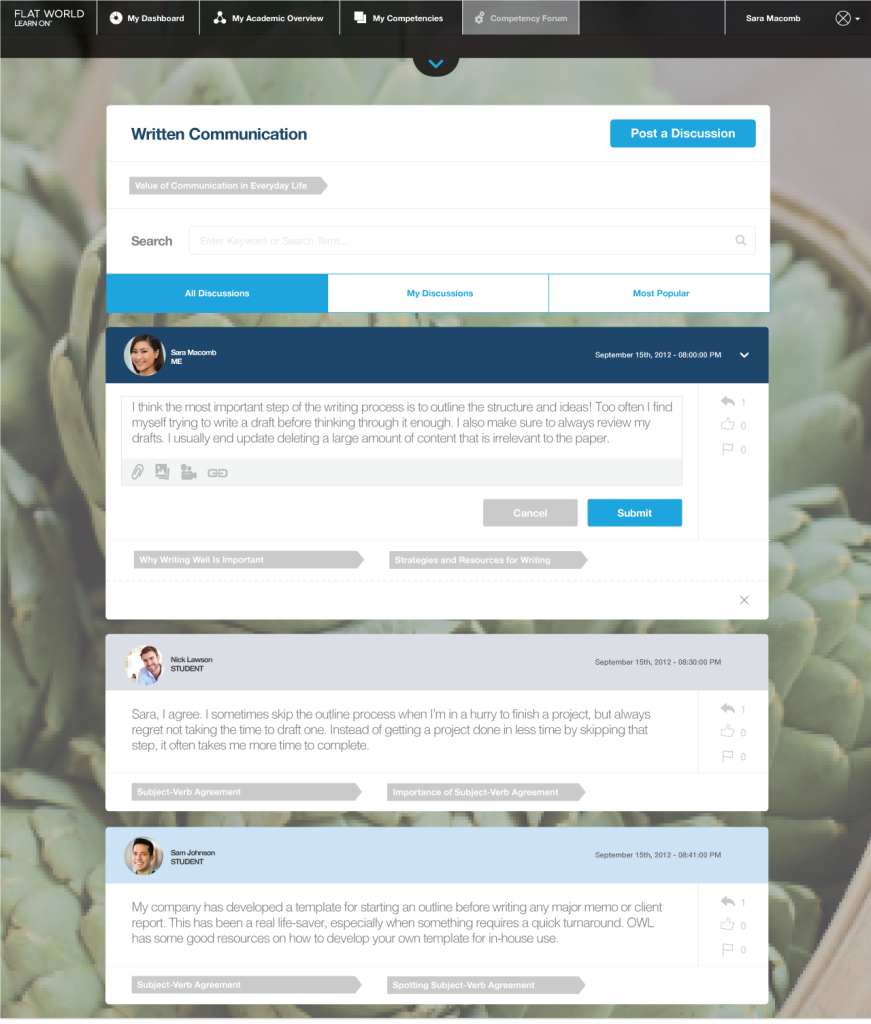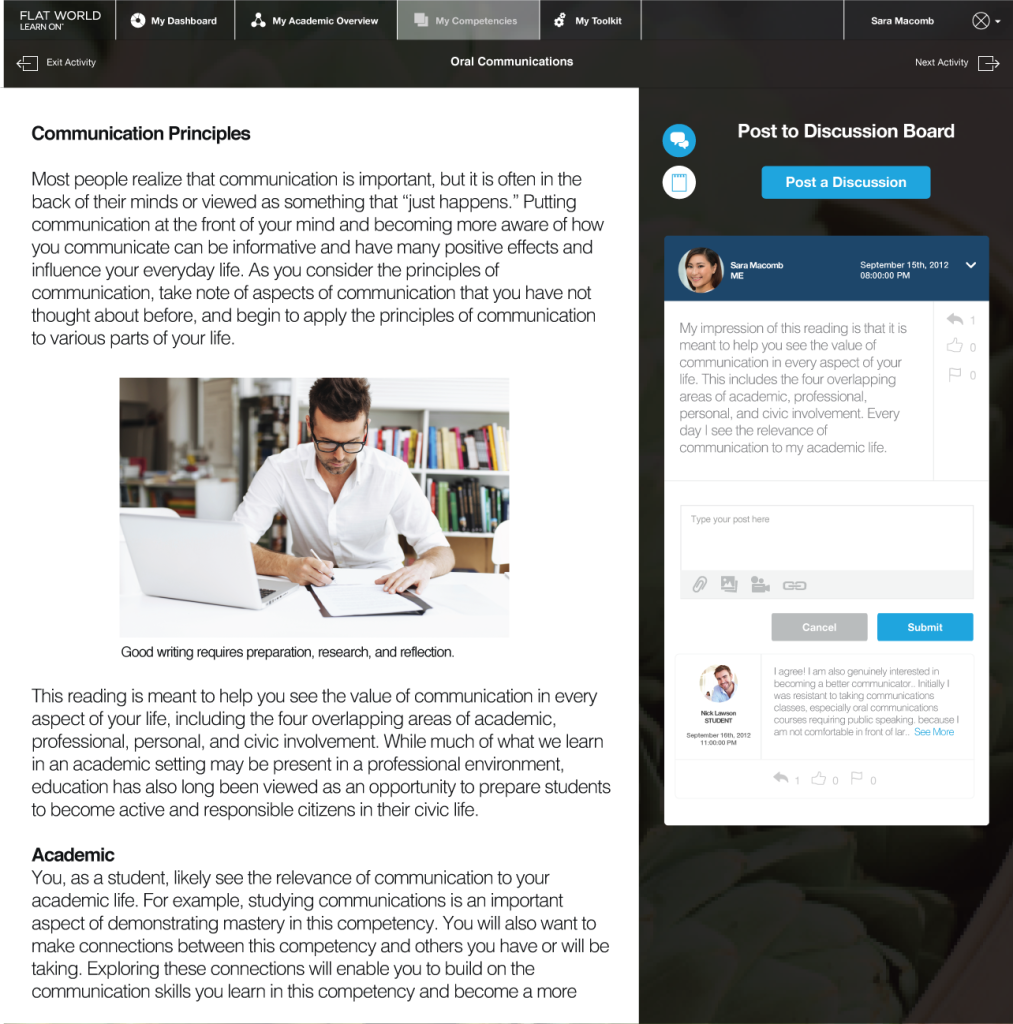As competency-based education (CBE) becomes more and more important to US higher education, it would be worth exploring the learning platforms in use. While there are cases of institutions using their traditional LMS to support a CBE program, there is a new market developing specifically around learning platforms that are designed specifically for self-paced, fully-online, competency-framework based approaches.
Several weeks ago Flat World announced their latest round of funding, raising $5 million of debt financing, raising their total to $40.7 million. The company started out by offering full e-textbooks (and was previously named FlatWorld Knowledge), developing 110 titles that included 25 of the 50 most-used lecture courses. The e-textbook market was not working out, however, and the company pivoted to competency-based education around the time that Chris Etesse became CEO two years ago. Now the company is developing a combined CBE learning platform with integrated course content – much of it repurposing the pre-existing e-textbook materials. Their first academic partner for CBE is Brandman University, a non-traditional part of the Chapman University system and is currently one of the CBEN network.
One central tenet of the Flat World approach is based on their history and pivot – a tight integration of content and platform. As Etesse describes it, content is a 1st-class citizen in their system whereas other loosely-coupled approaches that do not tie content and platform together can be difficult to navigate and collect learning analytics. In other words, this intentionally is a walled-garden approach. For Brandman, approximately 70% of the content comes from the pre-existing FlatWorld texts, 25% comes from various OER sources, and about 5% has been custom-designed for Brandman.
In other words, this is very much a walled garden by design. While there is support for outside content, I believe this integration must be done by Flat World designers.
As was the case for the description of the Helix CBE-based learning platform, my interest here is not merely to review one company’s products, but rather to illustrate aspects of the growing CBE movement using the demo.
CBE programs by their very nature tend to be self-paced. One criticism or line of questions I’m seeing more often deals with the nature of self-paced learning itself. Are students just plugging through mindless e-text and multiple-choice assessments in isolation? What Flat World illustrates – as with other major CBE learning platforms – is that self-paced does not imply isolation, either from a student-teacher or from a student-student perspective. New approaches that are different than simple discussion forums are required, however.
FlatWorld shows several learning activities:
- Reading text and viewing multi-media content adaptively presented based on a pretest and progress against competencies;
- Taking formative assessments primarily through multiple-choice quizzes;
- Interacting with students and with faculty;
- Working through project-based assignments;
- Taking summative assessments through proctored, webcam-streaming approach.
The activities and assessments do not have to be students working in isolation and using multiple-choice. For example, the project based work can be included and assignments can include submission of written reports or based on short-form prompts. As can be seen below, the assessments can be based on submitted written work which faculty grade and use for feedback.
For communication with others, students are tracked in how active they are in communicating with faculty and even with other students (called ‘social’), as seen below.
One challenge of a self-paced program such as CBE approaches is figuring out how to encourage students to interact with others. There is not a simple cohort to work with – the interaction instead will often be based on content. Who else is working through the same content in roughly the same time period.
FlatWorld uses an approach that is very similar to Stack Overflow, where students can ask and answer questions over time, and the answers are voted up or down to allow the best answers to rise to the top. The stack overflow is moderated by faculty at Brandman. This not only allows students working on the same competencies at roughly the same time, but it even allows interaction with students on similar competencies separated in time.
There certainly is a tendency in many CBE programs to stick to multiple-choice assignments and quizzes and to avoid much social interaction. That method is a whole lot easier to design, and with several hundred of new programs under development, I think the overall quality can be quite low in many programs, particularly those looking for a quick-win CBE introduction, essentially trying to jump on the bandwagon. You can see the tendency towards multiple-choice in the FlatWorld system as well.
But self-paced does not imply isolation, and the Flat World implementation of the Brandman University program shows how CBE can support project-based work, written assignments and assessments, and interaction between students and faculty as well as between multiple students.




[…] are a new wave of learning platforms designed specifically for this latter category. I have started to cover the CBE platforms recently, as Motivis, Helix, FlatWorld, LoudCloud Systems, and others have been […]